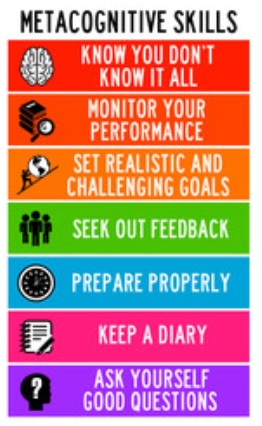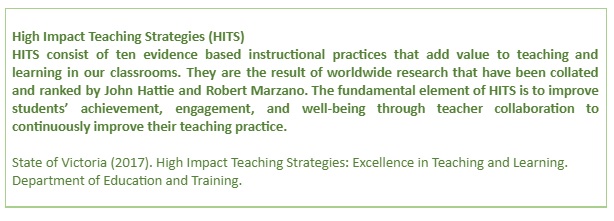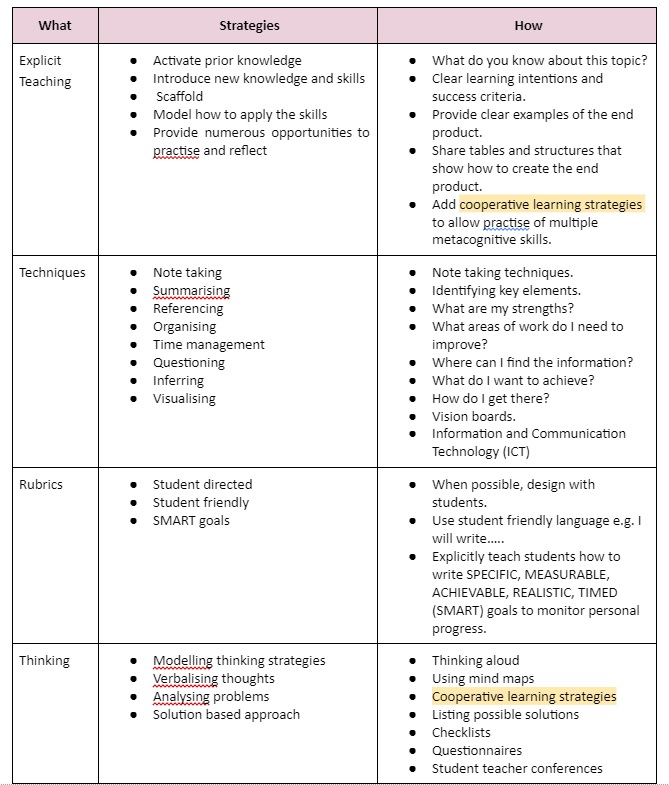What is it?
When we include metacognitive strategies into our lessons, we encourage our students to think about their thinking. It includes strategies such as planning, positive self-talk, mental scripting, self-questioning, and self-monitoring. We are motivating our students to be critical of their thinking, set personal learning goals, explore how their brains work, adopt a growth mindset, and use metacognitive tools to enhance and improve their own learning. We are giving our students multiple tools to discover how they can approach classroom tasks, assess and gauge their own progress, and gain confidence in observing their understanding. We are helping our students build resilience and persevere when things are not going their way. Over time, our students will develop persistence when faced with learning new skills that are perceived as difficult or challenging.
How do we explicitly teach metacognitive strategies to EAL students?
When we consciously include metacognitive strategies in our daily lesson, we are providing our students a variety of specific strategies and processes to assess and track their personal learning goals. These skills, when practised over time, become a part of their repertoire of skills that will serve them beyond school. We need to provide opportunities for our students to access content and skill sets using different metacognitive strategies through various scaffolds, models, and assessment tasks. As teachers, we ourselves need to have the courage to take a step back and allow our students to personalise their learning. Let’s empower our students to reflect on their own learning, actively seek feedback, and utilise a repertoire of strategies to take control of their personal achievements.





